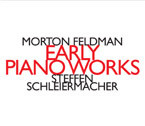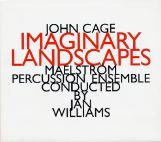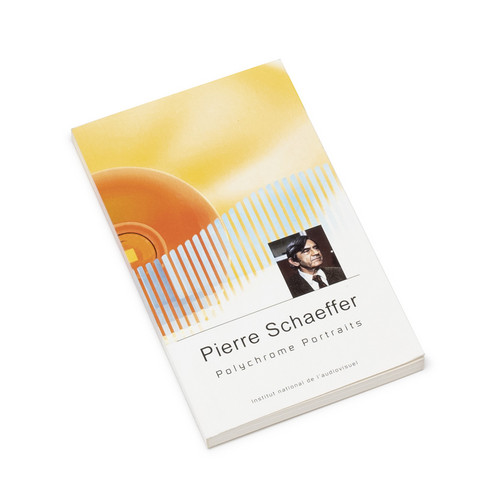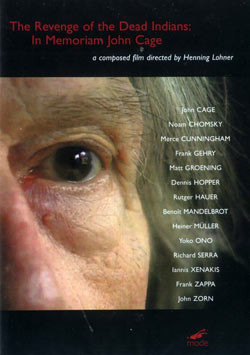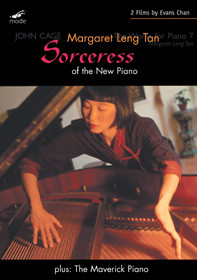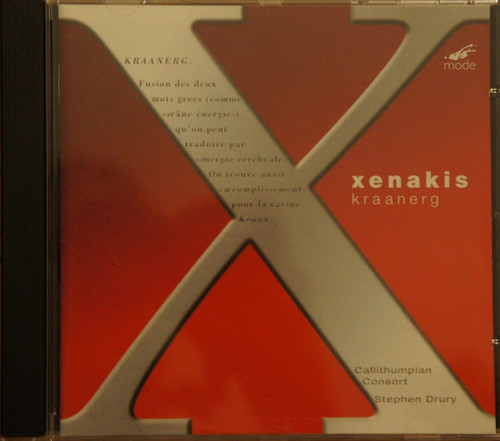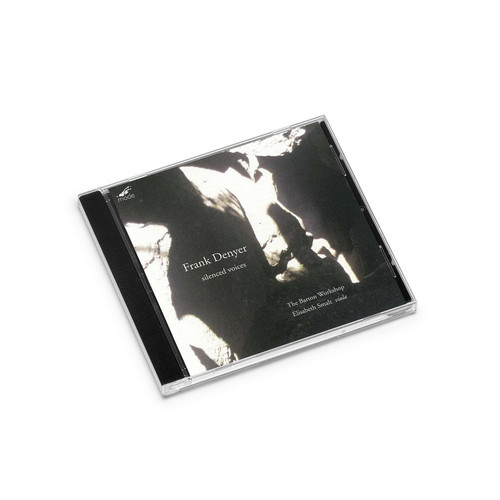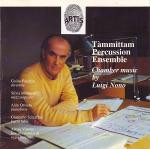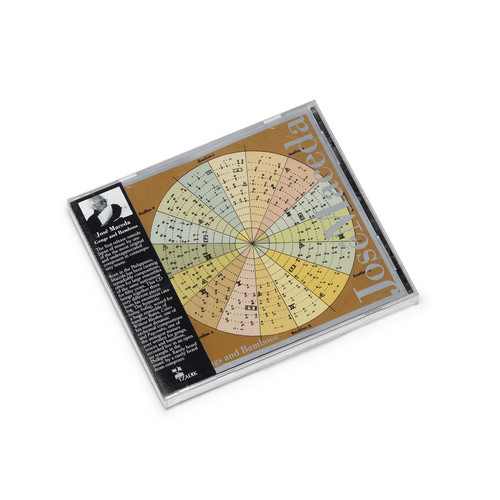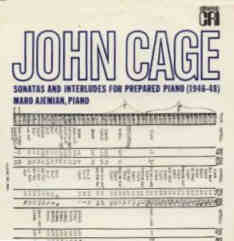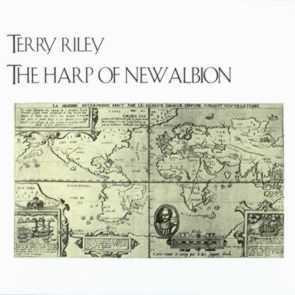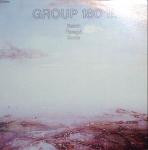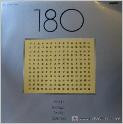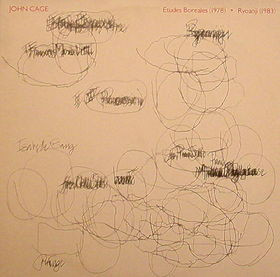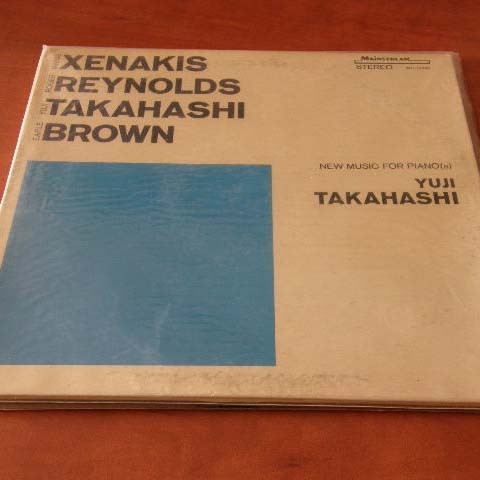Ho Khoom Pranam
an original copy of an awesome Scelsi LP, featuring Hô (1960) - Four melodies for solo voices. Pranam I (1972) - (In memory of the tragic loss of Jani and Sia Christou) for voice, 12 instruments and tape. Khoom (1962) - (Seven episodes of a story of love and death in a distant land) for voice and 6 instruments. Hô and Khoom were recorded in 1960-1962: Pranam I, in 1972.
The works of double bass
This disc contains the first complete recordings of Giacinto Scelsi's music for double bass. Volume 7 in Mode's acclaimed Scelsi Edition. Scelsi's infamous 'KO-THA I, II, Ill' -- for string instrument played lying on its back in a percussive manner -- is presented for the first time in an adaptation from the original for guitar by legendary bassist Fernando Grillo. Robert Black, internationally known as one of the leading bassists of our time, has also collaborated or performed with a diverse nu…
Early Piano Works
For each ecstatic instant / We must an anguish pay / In keen and quivering ratio / To the ecstasy." It almost seems as if Emily Dickinson could have been describing the early piano music of Morton Feldman when she wrote those lines nearly one-hundred-and-fifty years ago. Certainly, the uncommonly short, acutely concentrated, unadorned and vulnerable pieces Feldman composed between 1950 and 1964 each span just an “ecstatic instant” — a brief, heightened experience measured not according to time b…
Imaginary Landscapes
Improvising guitarist Derek Bailey has expressed the belief that «If you’re going to explore uncharted territory, it’s okay to carry a compass, but not a map.» It’s obvious; if you know where you’re going and have plotted the most efficient or scenic course to get there, you may arrive without mishap but deprived of much of the drama, the danger, the unpredictable uniqueness of the journey. In the years following 1950, John Cage walked these paths of musical uncertainty, providing performers wit…
PORTRAITS POLYCHROMES
Outstanding book + 4 cd in a truly deluxe edition sold to a very cheap price- Portraits polychromes are a series of books associated with multimedia documents presented on the Internet site of the GRM since 2001. In releasing this collection, their primary concern was to increase awareness of the electroacoustic repertoire and the reserves in the GRM archives. Pierre Shaeffer, Pierre Henry, Brian Kane, Réjean Beaucage, Marcus Erbe and Simon Grintsch, Martin Laliberté, Philippe Langlois, Jacques …
The revenge of the dead indians: in memoriam John Cage
The Revenge of the Dead Indians: In Memoriam John Cage (1993), a composed film directed by Henning Lohner. Featuring: Gary Burton, John Cage, Noam Chomsky, Merce Cunningham, William Forsythe, Betty Freeman, Frank Gehry, Murray Gell-Mann, Matt Groening, Rutger Hauer, Dennis Hopper, Ellsworth Kelly, Alison Knowles, Raymond Kurzweil, Edward Lorenz, Benoît Mandelbrot, Yehudi Menuhin, Marvin Minsky, Heiner Müller, Jean Nouvel, Yoko Ono, Tomaso Poggio, Richard Serra, Shankar, Giorgio Strehler, Iannis …
The Artistry of Margaret Leng Tan
10 years in the making, 2 films by Evans Chan trace the artist's life, career and pianism. Strumming the strings of a grand piano like a harp and performing Beethoven on toy piano are among the surprising scenes in Evans Chan's documentary, Sorceress of the New Piano (2004), which celebrates the trans-cultural career of Singapore-born, New York-based pianist Margaret Leng Tan, hailed by The New Yorker as 'the diva of avant-garde pianism.' Featured performers and critics include Joan LaBarbara, E…
Kraanerg
Kraanerg (1968) for 23 instruments and 4-channel tape. Callithumpian Consort, Stephen Drury, conductor. First recording with restored analog tape. Kraanerg is one of Iannis Xenakis' most popular - and infamous - works. A visceral and highly charged score for woodwinds, brass, and strings along with quadrophonic tape. The title, Kraanerg, is a composite of two Greek words: "kraan", meaning to perfect, to accomplish; and "erg", signifying energy. Commissioned for the gala opening of the National A…
Silenced Voices
The Barton Workshop & others. Frank Denyer & James Fulkerson, music directors. 'Woman, Viola and Crow' (2004) with Elisabeth Smalt, muted viola, voice, percussion sounds. 'Two Beacons' (2005) with Harma Everts, voice; Boris Visser, muted violin; Rozemarie Heggen, muted double-bass; Neil Sorrell, sarangi; Tobias Liebezeit & Juan Martinez Cortès, percussion; Jos Zwaanenburg, Melkorta Olafsdottir, Ayano Akubo, flutes; Joeri de Vente, horn; Yula Andrews, Ella Dangerfield, Catherine Guy, Lucinda Guy,…
Chamber Music By Luigi Nono
Recorded at Sentemo Records, Cessalto (Italy) on 30 January and 1-2-20 February 1993, except track 5 recorded live 4 May 1991 at Teatro Comunale, Ferrara (Italy). "Polifonica-Monodia-Ritmica", for 6 instruments and percussion, composed in 1951. "La Fabbrica Illuminata", for voice and tape, composed in 1964. "...sofferte onde serene..." for piano and tape, composed in 1976-77. "Post-Prae-Ludium Per Donau" for tuba and live electronics, composed in 1987. "Con Luigi Dallapiccola" for 6 percussionis…
Lepton
Four absolute masterpieces by one of the greatest composers of the 20th Century. Spanning over three decades, LEPTON presents New York born Wuorinen at his radical best, pushing the limits of instrumental and electronic music. Expressly chosen for this exclusive Tzadik release by longtime Wuorinen fan John Zorn, the pieces here include the electronic composition Time's Encomium, (winner of the Pulitzer Prize in 1970); from the '80s: New York Notes, which brilliantly blends electronic tape with a…
Gongs and Bamboo
*2022 stock.* The first release outside Japan of music by one of the the most original and underappreciated composers in contemporary music. Born 1900 in the Phillipines, Maceda has been creating remarkable compositions, often for large ensembles of the same instrument for fifty years. This CD brings together three very different pieces from his enormous catalog. The hypnotic Suling-Suling is scored for an ensemble of forty bamboo flutes, Colors Without Rhythm is one of his most dynamic orchestr…
Sonatas And Interludes For Prepared Piano (1946-48)
another scarce early LP by John Cage, Sonatas and Interludes (1946-48) is considered Cage's first mature composition. The idea of a prepared piano filled with nuts, bolts, screws, rubber mutes and weather-stripping comes as much from Cowell's tinkering 15 years earlier (Aeolian Harp, for instance) as it does from Cage's engagement with percussion ensembles beginning in 1937. Indeed, it was the practical limitations of the stage at the Cornish School that forced Cage, an accomplished pianist, to …
The Harp Of New Albion
The Harp of New Albion is a transfixing solo piano recording, conceived and performed by world-renowned minimalist composer, the ever-innovative Terry Riley. His inspiration for this work came from a legendary harp, left behind in the New World in 1579, on the shores of Nova Albion, which is now called San Francisco Bay. A Native American medicine man is said to have found the harp and placed it on a cliff where the westerly winds played upon it and temperature and humidity changes created an ev…
II.
Group 180 II is from 1985 and exhibits the same good taste in modern compositional works. There are two pieces by Steven Reich, “Piano Phase” and “Octet”. Compositions by András Soós and Bela Farago make up the rest of the album. It should be note that, with the exception of Rzewski and Reich, the composers are all members of Group 180. It is again a well played set and one that fans of modern music will treasure. Only one copy available.
180-AS-CSOPORT
'Group 180' ('180-as Csoport' in Hungarian) was a Hungarian ensemble dedicated to the performance of new music, active from 1978 until 1990. The group achieved recognition for their performances and recordings of contemporary music in the minimal style. Group 180's membership included several young Hungarian composers (among them László Melis and Tibor Szemz?), whose works formed an important part of the ensemble's repertoire. This brought the group prominence as one of the preeminent European n…
Etudes Boreales • Ryoanji
Very scarce John Cage album released on Mode Records in the early eighties. "This two-record set collects some terrific performances in solo and duo contexts and is also quite a fine welcome mat into the Cage . By comparing different versions of "Etudes Boreales" -- first piano solo, then cello solo, then combined -- much can be gleaned about the way this composer thinks, a endlessly interesting subject in itself. The individual players are virtuosos not only in playing but thinking as well, com…
New Music For Piano(s)
Compositions by Xenakis/Takahashi/Earle Brown performed by Yuji Takahashi, on Mainstream. Hérma for piano solo (1960-61) by Xenakis dedicated to Yuji Takahashi; Fantasy for Pianist (1963-64) by Reynolds; Metatheses (1968) by Yuji Takahashi dedicated to Gunther Schuller; Corroboree (for three pianos) (1963-64) by Earle Brown commissioned by and dedicated to Aloys, Alfons and Bernhardt Kontarsky Only one copy available.
Music in Twelve Parts
Ultra rare original UK first pressing on Caroline, cover design by Sol Lewitt - "All of my works which predate 1976 fall within the highly reductive style known as minimalism. I feel that minimalism can be traced to a fairly specific timeframe, from 1965 through 1975, and nearly all my compositions during this period may be placed in this general category. All such categories are arbitrary, however, and can be misleading. For example, although Music in 12 Parts would most likely be classified as…
Rothko Chapel / For Frank O'Hara
Two famous compositions from Morton Feldman.: Rothko chapel, [sound recording] for chorus, viola, and percussion and For Frank O'Hara, for flute, clarinet, violin, cello, piano, and percussion. Both pieces consists of mostly only slightly overlapping tones. Only one copy available.


